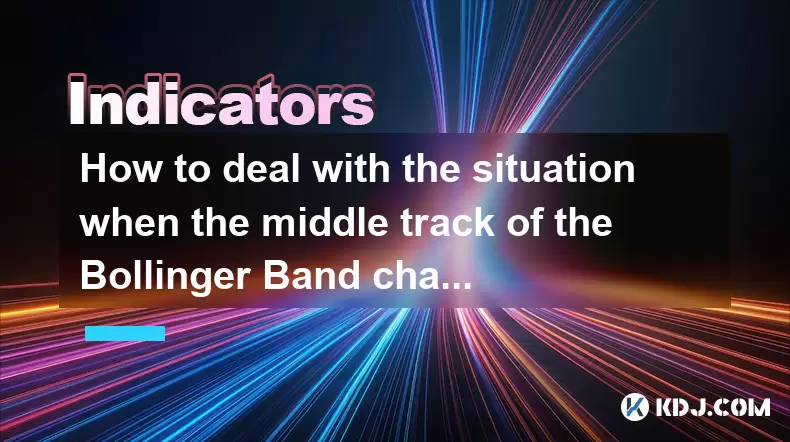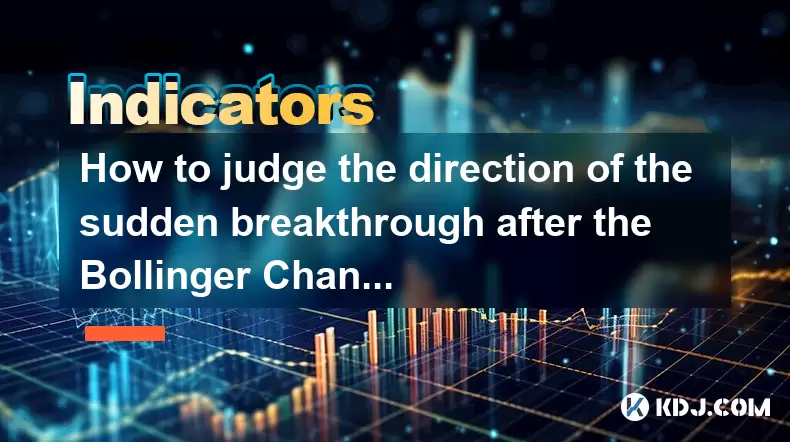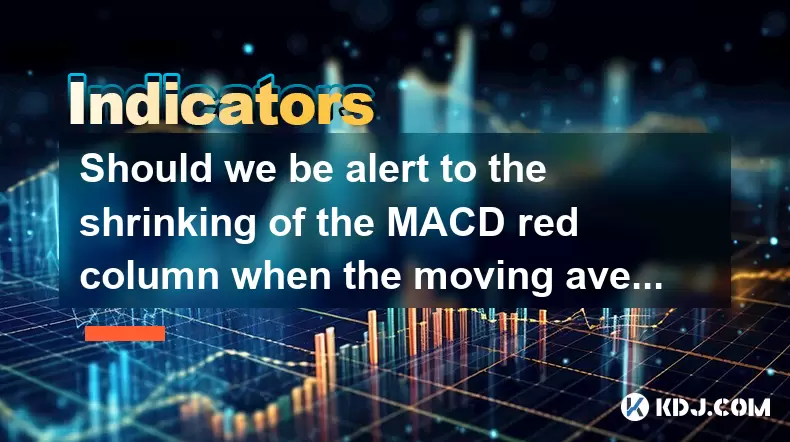-
 Bitcoin
Bitcoin $101,898.5005
-0.75% -
 Ethereum
Ethereum $2,258.1125
-1.07% -
 Tether USDt
Tether USDt $1.0004
0.01% -
 XRP
XRP $2.0178
-2.93% -
 BNB
BNB $624.0243
-1.53% -
 Solana
Solana $134.3298
-0.90% -
 USDC
USDC $0.9999
0.01% -
 TRON
TRON $0.2675
-2.05% -
 Dogecoin
Dogecoin $0.1538
-1.96% -
 Cardano
Cardano $0.5482
-1.11% -
 Hyperliquid
Hyperliquid $35.5636
5.45% -
 Bitcoin Cash
Bitcoin Cash $453.4902
-1.66% -
 Sui
Sui $2.5134
-2.97% -
 UNUS SED LEO
UNUS SED LEO $9.1292
1.77% -
 Chainlink
Chainlink $11.8457
-1.60% -
 Stellar
Stellar $0.2312
-2.73% -
 Avalanche
Avalanche $16.9721
0.29% -
 Toncoin
Toncoin $2.7549
-3.82% -
 Shiba Inu
Shiba Inu $0.0...01081
-1.10% -
 Litecoin
Litecoin $80.8250
-0.71% -
 Hedera
Hedera $0.1374
0.21% -
 Monero
Monero $305.4827
-2.36% -
 Ethena USDe
Ethena USDe $1.0006
0.00% -
 Dai
Dai $1.0000
-0.01% -
 Polkadot
Polkadot $3.2085
-3.12% -
 Bitget Token
Bitget Token $4.0845
-3.13% -
 Uniswap
Uniswap $6.3353
-1.63% -
 Pi
Pi $0.5085
-0.70% -
 Pepe
Pepe $0.0...08913
-3.82% -
 Aave
Aave $232.7090
-0.58%
What is the difference between WR and KDJ? Which is more accurate, WR or RSI?
WR and KDJ help traders identify overbought/oversold conditions in crypto markets, while WR's accuracy vs. RSI depends on market volatility and trading strategy.
May 23, 2025 at 03:28 am

In the world of cryptocurrency trading, technical indicators play a crucial role in helping traders make informed decisions. Two commonly used indicators are the Williams %R (WR) and the KDJ indicator. Additionally, traders often compare WR with the Relative Strength Index (RSI) to assess their accuracy. This article will delve into the differences between WR and KDJ, as well as the accuracy comparison between WR and RSI.
Understanding the Williams %R (WR)
The Williams %R (WR) is a momentum indicator used to identify overbought and oversold conditions in the market. Developed by Larry Williams, this indicator measures the level of the close relative to the high-low range over a given period, typically 14 days. The formula for WR is as follows:
[ WR = \frac{Highest High - Close}{Highest High - Lowest Low} \times -100 ]
The WR values range from 0 to -100. A reading above -20 indicates an overbought condition, suggesting a potential price decline, while a reading below -80 signals an oversold condition, hinting at a possible price increase.
Understanding the KDJ Indicator
The KDJ indicator, also known as the Stochastic Oscillator, is another momentum indicator used to gauge overbought and oversold conditions. Unlike WR, which uses a single line, the KDJ indicator consists of three lines: the K line, the D line, and the J line. The K and D lines are derived from the stochastic oscillator, while the J line is calculated as follows:
[ J = 3D - 2K ]
The KDJ values also range from 0 to 100. Similar to WR, readings above 80 indicate overbought conditions, and readings below 20 suggest oversold conditions. Traders often look for crossovers between the K and D lines to identify potential buy and sell signals.
Key Differences Between WR and KDJ
One of the main differences between WR and KDJ is their calculation methods. While WR uses a single line to measure the distance from the close to the highest high over a given period, the KDJ indicator uses three lines to provide more detailed insights into market momentum. This additional complexity can help traders identify potential reversals more accurately.
Another difference lies in their sensitivity to price changes. The WR indicator tends to be more sensitive to short-term price movements, making it suitable for traders who focus on short-term trading strategies. In contrast, the KDJ indicator is less sensitive to short-term fluctuations and may be more suitable for traders who prefer a longer-term perspective.
Furthermore, the interpretation of signals differs between the two indicators. With WR, traders primarily look at the levels of -20 and -80 to identify overbought and oversold conditions. On the other hand, KDJ traders often pay attention to the crossovers between the K and D lines, as well as the divergence between the J line and price action.
Comparing the Accuracy of WR and RSI
The Relative Strength Index (RSI) is another popular momentum indicator used to identify overbought and oversold conditions. Like WR, RSI is calculated based on the price changes over a given period, typically 14 days. The formula for RSI is as follows:
[ RSI = 100 - \frac{100}{1 + RS} ]
Where RS is the average gain divided by the average loss.
When comparing the accuracy of WR and RSI, it's important to consider their strengths and weaknesses. WR is particularly effective in identifying overbought and oversold conditions in volatile markets, as it focuses on the high-low range. On the other hand, RSI is more versatile and can be used to identify both overbought/oversold conditions and potential trend reversals.
In terms of accuracy, neither WR nor RSI can be considered universally more accurate than the other. Their effectiveness depends on the specific market conditions and the trader's strategy. WR may be more accurate in highly volatile markets, while RSI might perform better in trending markets.
Practical Application of WR and KDJ in Cryptocurrency Trading
To apply WR in cryptocurrency trading, follow these steps:
- Choose a suitable timeframe: WR can be applied to various timeframes, from 1-minute charts to daily charts. Select a timeframe that aligns with your trading strategy.
- Set the WR period: The default period for WR is 14, but you can adjust it based on your preference. Shorter periods will make the indicator more sensitive to price changes.
- Monitor WR levels: Keep an eye on the -20 and -80 levels. When WR crosses above -20, it may be a signal to sell, and when it falls below -80, it could be a signal to buy.
- Confirm with other indicators: Always use WR in conjunction with other technical indicators or chart patterns to increase the accuracy of your trading signals.
To apply KDJ in cryptocurrency trading, follow these steps:
- Select a suitable timeframe: Like WR, KDJ can be applied to various timeframes. Choose one that suits your trading style.
- Set the KDJ periods: The default periods for KDJ are 9, 3, and 3 for the K, D, and J lines, respectively. You can adjust these periods to suit your needs.
- Monitor KDJ levels: Watch for the K and D lines crossing above 80 (overbought) and below 20 (oversold). Additionally, look for crossovers between the K and D lines.
- Analyze the J line: The J line can provide additional insights into market momentum. A J line above 100 suggests strong bullish momentum, while a J line below 0 indicates strong bearish momentum.
- Confirm with other indicators: Use KDJ in combination with other technical indicators or chart patterns to validate your trading signals.
Practical Application of WR and RSI in Cryptocurrency Trading
To apply WR in conjunction with RSI in cryptocurrency trading, follow these steps:
- Set up both indicators on your chart: Add both the WR and RSI indicators to your trading platform, using the default periods of 14 for both.
- Monitor overbought and oversold conditions: Look for instances where both WR and RSI indicate overbought conditions (WR above -20 and RSI above 70) or oversold conditions (WR below -80 and RSI below 30). These concurrent signals can increase the reliability of your trading decisions.
- Identify divergences: Pay attention to divergences between WR, RSI, and price action. For example, if the price is making new highs but WR and RSI are not, it could signal a potential reversal.
- Combine with other analysis: Use WR and RSI in conjunction with other technical analysis tools, such as trend lines, support and resistance levels, and volume indicators, to confirm your trading signals.
Frequently Asked Questions
Q: Can WR and KDJ be used together in cryptocurrency trading?
A: Yes, WR and KDJ can be used together to enhance trading decisions. While WR focuses on the high-low range to identify overbought and oversold conditions, KDJ provides additional insights through its three lines. Traders can use WR to confirm KDJ signals, especially when both indicators indicate overbought or oversold conditions simultaneously.
Q: How often should I adjust the periods for WR and KDJ?
A: The frequency of adjusting the periods for WR and KDJ depends on your trading strategy and market conditions. If you're a short-term trader, you might adjust the periods more frequently to adapt to rapid market changes. Long-term traders may prefer to use the default periods and adjust them less often. It's essential to backtest any changes to ensure they improve your trading performance.
Q: Are there any specific cryptocurrencies where WR or KDJ works better?
A: WR and KDJ can be applied to any cryptocurrency, but their effectiveness may vary depending on the asset's volatility and trading volume. Generally, WR may work better in highly volatile cryptocurrencies, such as Bitcoin or Ethereum, where the high-low range is more pronounced. KDJ, with its multiple lines, might be more effective in less volatile altcoins where trend identification is crucial.
Q: Can WR and RSI be used to predict long-term trends in cryptocurrencies?
A: While WR and RSI are primarily used for identifying short-term overbought and oversold conditions, they can also be used to identify potential long-term trends when combined with other technical analysis tools. For example, if WR and RSI consistently show higher lows during a downtrend, it could signal a potential reversal to an uptrend. However, for long-term trend analysis, it's advisable to use these indicators in conjunction with moving averages, trend lines, and other trend-following indicators.
Disclaimer:info@kdj.com
The information provided is not trading advice. kdj.com does not assume any responsibility for any investments made based on the information provided in this article. Cryptocurrencies are highly volatile and it is highly recommended that you invest with caution after thorough research!
If you believe that the content used on this website infringes your copyright, please contact us immediately (info@kdj.com) and we will delete it promptly.
- Cryptocurrencies, Coingecko, and Trending Tokens: What's Hot Now?
- 2025-06-23 23:05:12
- FUNToken: Decoding Past Trends and Getting Started in the Gaming Crypto Sphere
- 2025-06-23 22:25:12
- BTC Price Analysis: Navigating Volatility and the Quest for a New ATH
- 2025-06-23 22:25:12
- Genesis, Bitcoin Mining, and Air-Cooled Miners: A New Era?
- 2025-06-23 22:45:12
- Coinbase's Growth and Resilience: Navigating the Crypto Landscape
- 2025-06-23 22:45:12
- Bitcoin Options Market: Bullish Bets Amidst Geopolitical Jitters
- 2025-06-23 22:51:52
Related knowledge

What is the significance of the gap formed by the gap opening not being filled within five days?
Jun 23,2025 at 09:42pm
Understanding Gaps in Cryptocurrency TradingIn the world of cryptocurrency trading, a gap refers to a situation where the price of an asset jumps from one level to another without any trading activity occurring between those two levels. This often happens over weekends or holidays when the market is closed, and significant news or events occur that impa...

How to deal with the situation when the middle track of the Bollinger Band changes from support to resistance?
Jun 23,2025 at 11:22pm
Understanding the Bollinger Band Middle TrackThe Bollinger Band is a widely used technical indicator in cryptocurrency trading. It consists of three lines: the upper band, the lower band, and the middle track, which is typically a 20-period simple moving average (SMA). Traders often rely on the middle track as a dynamic support or resistance level. Howe...

Does the second golden cross of MACD above the zero axis represent the continuation of strength?
Jun 23,2025 at 08:21pm
Understanding the MACD IndicatorThe Moving Average Convergence Divergence (MACD) is a widely used technical analysis tool in cryptocurrency trading. It consists of three main components: the MACD line, the signal line, and the histogram. The MACD line is calculated by subtracting the 26-period Exponential Moving Average (EMA) from the 12-period EMA. The...

How to judge the direction of the sudden breakthrough after the Bollinger Channel narrows to the extreme?
Jun 23,2025 at 11:00pm
Understanding the Bollinger Channel and Its Narrowing PatternThe Bollinger Channel is a widely used technical indicator in cryptocurrency trading, consisting of three bands: the middle band (a simple moving average), and two outer bands that represent standard deviations from the middle line. When the price consolidates for an extended period, the chann...

Is it effective when the DIF line suddenly crosses the zero axis when the volume is shrinking and the market is trading sideways?
Jun 23,2025 at 07:29pm
Understanding the DIF Line in Technical AnalysisThe DIF line, or the Difference Line, is a critical component of the MACD (Moving Average Convergence Divergence) indicator, widely used in technical analysis across cryptocurrency and traditional financial markets. It represents the difference between the 12-period EMA (Exponential Moving Average) and the...

Should we be alert to the shrinking of the MACD red column when the moving average is arranged in a bullish pattern?
Jun 23,2025 at 08:14pm
Understanding the MACD Red Column and Its SignificanceThe Moving Average Convergence Divergence (MACD) is a widely used technical indicator in cryptocurrency trading. It consists of three main components: the MACD line, the signal line, and the MACD histogram (the red column). The red column represents the difference between the MACD line and the signal...

What is the significance of the gap formed by the gap opening not being filled within five days?
Jun 23,2025 at 09:42pm
Understanding Gaps in Cryptocurrency TradingIn the world of cryptocurrency trading, a gap refers to a situation where the price of an asset jumps from one level to another without any trading activity occurring between those two levels. This often happens over weekends or holidays when the market is closed, and significant news or events occur that impa...

How to deal with the situation when the middle track of the Bollinger Band changes from support to resistance?
Jun 23,2025 at 11:22pm
Understanding the Bollinger Band Middle TrackThe Bollinger Band is a widely used technical indicator in cryptocurrency trading. It consists of three lines: the upper band, the lower band, and the middle track, which is typically a 20-period simple moving average (SMA). Traders often rely on the middle track as a dynamic support or resistance level. Howe...

Does the second golden cross of MACD above the zero axis represent the continuation of strength?
Jun 23,2025 at 08:21pm
Understanding the MACD IndicatorThe Moving Average Convergence Divergence (MACD) is a widely used technical analysis tool in cryptocurrency trading. It consists of three main components: the MACD line, the signal line, and the histogram. The MACD line is calculated by subtracting the 26-period Exponential Moving Average (EMA) from the 12-period EMA. The...

How to judge the direction of the sudden breakthrough after the Bollinger Channel narrows to the extreme?
Jun 23,2025 at 11:00pm
Understanding the Bollinger Channel and Its Narrowing PatternThe Bollinger Channel is a widely used technical indicator in cryptocurrency trading, consisting of three bands: the middle band (a simple moving average), and two outer bands that represent standard deviations from the middle line. When the price consolidates for an extended period, the chann...

Is it effective when the DIF line suddenly crosses the zero axis when the volume is shrinking and the market is trading sideways?
Jun 23,2025 at 07:29pm
Understanding the DIF Line in Technical AnalysisThe DIF line, or the Difference Line, is a critical component of the MACD (Moving Average Convergence Divergence) indicator, widely used in technical analysis across cryptocurrency and traditional financial markets. It represents the difference between the 12-period EMA (Exponential Moving Average) and the...

Should we be alert to the shrinking of the MACD red column when the moving average is arranged in a bullish pattern?
Jun 23,2025 at 08:14pm
Understanding the MACD Red Column and Its SignificanceThe Moving Average Convergence Divergence (MACD) is a widely used technical indicator in cryptocurrency trading. It consists of three main components: the MACD line, the signal line, and the MACD histogram (the red column). The red column represents the difference between the MACD line and the signal...
See all articles
























































































